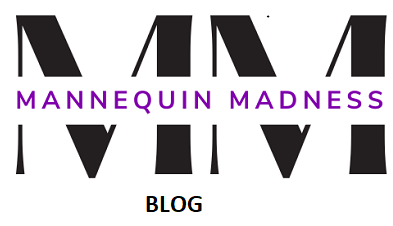This blog post demonstrates how the right choice of mannequin can make all the difference in the visual appeal of a clothing exhibit. Too many museums default to using generic mannequins for their fashion displays, because they don’t realize there are other options available.
This guest blog post below is from Dhani Mau at Fashionista.

The Ebony Fashion Fair, an annual traveling fashion show that, for 50 years, brought glamourous European fashion to eager African-African communities around the world–left a lasting legacy on African-American culture. It lives on in a new museum exhibition.
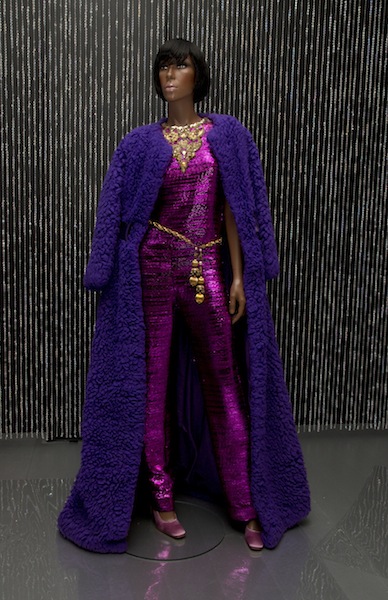
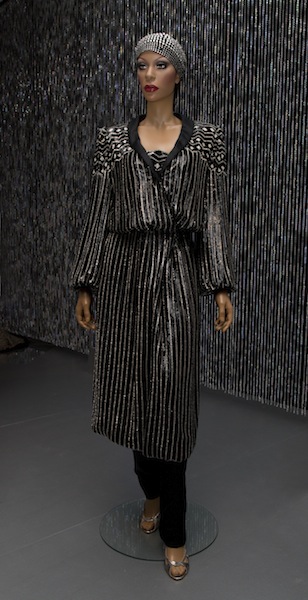
In 1958, socialite Jessie Covington Dent conceptualized the Ebony Fashion Fair as a charity fashion show, which was then taken over by Eunice Johnson, wife of Johnson Publishing Founder John H. Johnson.
Under Johnson’s leadership, and thanks to her connections and cachet, the EFF became a traveling event bringing couture and high-end designer fashion to fans of Johnson’s publications (Jet and Ebony) in communities that would otherwise not be exposed to it.
Johnson herself traveled to London, Milan, and Paris, overcoming racial prejudice to purchase items straight from the runways to use in her shows.

It went on until 2010, shortly after Johnson passed away. In all, EFF presented over 4,000 shows over 50-plus years, and raised more than $55 million dollars that went towards helping charities and college students across the country.

Last year, we chatted with current chairman of Johnson Publishing Company, Linda Johnson Rice, about the fair and a then-in-the-works fashion exhibition. Now that the exhibition has opened at the Chicago History Museum, we talked with its curator Joy Bivins about how Inspiring Beauty: 50 Years of Ebony Fashion Fair came together– from its cultural significance to the importance of the exhibition’s “risky” dark-skinned mannequins.
Bivins began working on the exhibition in spring of 2011. Clearly, it took a long time to build an exhibition that would not only display clothes (there are 67 outfits), but also tell a story and make vistiors feel what it was like to attend the original event.
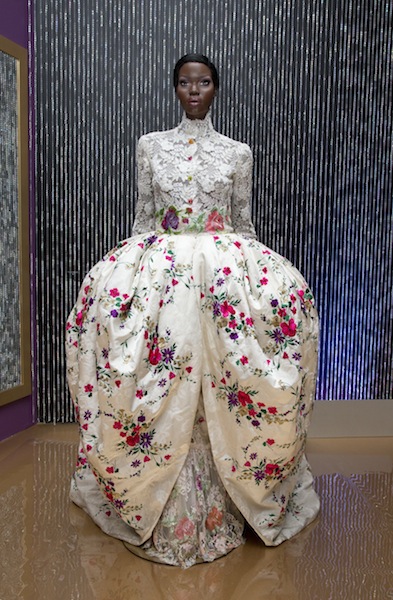
“The exhibition has a couple of different layers,” Bivins said. “There’s the story of the Ebony Fashion Fair, and the visionary ideas behind that and the work of Ms. Eunice Johnson, then there are the garments themselves that in a lot of ways represent this late 20th century, early 21st century history of fashion that the company was able to acquire.”
And that’s not all. “And then there’s the larger cultural impact of the fashion fair on the people who attended it and the people who worked for it, models who got their start there.”

They did this by selecting garments, which they pulled from the Johnson publishing company’s costume collection, that would best represent the EFF.
They tried to do this with color, silhouette, and by using designers that were representative of the relationships that Mrs. Johnson forged during her many years as director and producer of the EFF. “We’re using the clothes to uncover the rich history of the show and to wow our audiences,” Bivins told us.
Another aspect of the exhibition that’s made an impression on audiences is the mannequins, which are far from your run-of-the-mill white, uniform dummies. They all have various shades of dark skin and varying hair and makeup. “There’s been a lot of comment on the mannequins,” Bivins told us. “I think it was a bit of a risk because there were people who thought that wouldn’t be very modern or contemporary-looking.”

It may have been a risk, but it was one Bivins and her team put a lot of thought into. “Even before I started working on the project, there was the thought that we wanted to have mannequins that represented the diversity of the models that were in the Ebony Fashion Fair,” Bivins explained.
Each mannequin was custom made using four different skin shades. “They needed to have personality; they needed to have hair and makeup and looks that could stand up to the flamboyance of the garments that were being shown on them. Part of the concept of the Ebony Fashion Fair was [showing] the garment on a black or brown body.” For a more detailed review of the exhibition click here
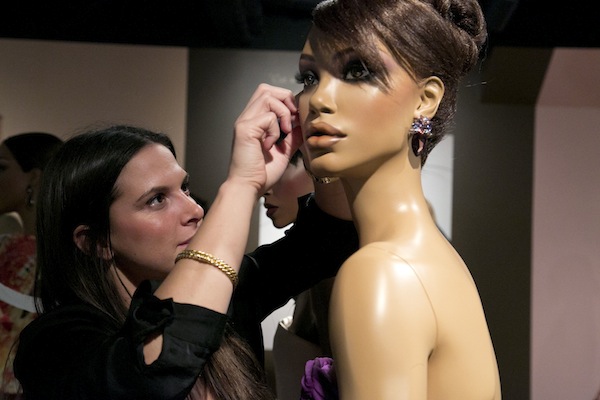
If you are a museum and need mannequins for your fashion displays, look up “used mannequins or “used store fixtures” on google. Then you can find companies like ours in your area that sell “gently used” designer mannequins at discount prices so you can stretch your visual merchandising budget.
